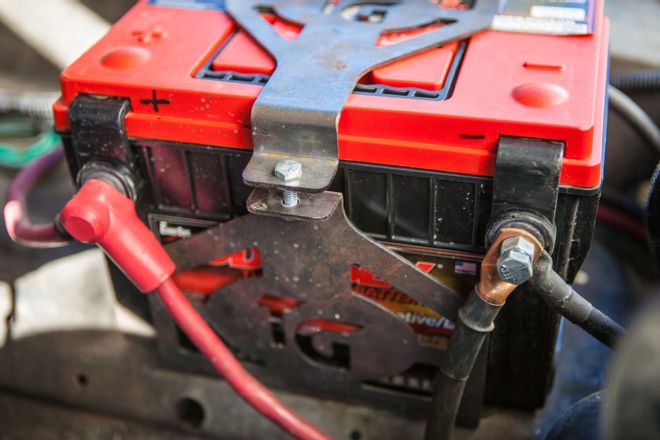
 Harry Wagner
Contributor
Photographers:
Manufacturer
Harry Wagner
Contributor
Photographers:
Manufacturer
Batteries are not glamorous, particularly when compared to items like LED light bars or winches. The problem is that neither of those accessories on the front of your rig will do you much good without a battery. The stock battery and alternator are adequate for powering the factory electronics, but as you add more accessories, consider a battery upgrade. The upgrade can come in different forms. You might replace your original battery with a more powerful absorbed glass mat (AGM) battery in the factory location, or even install a larger (or smaller) battery in an aftermarket battery box.
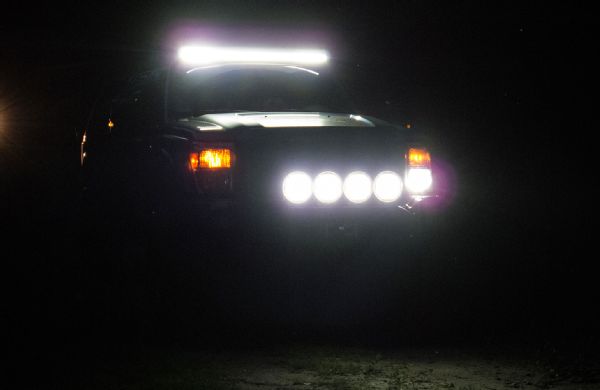
Automotive batteries consist of six electrochemical cells, each producing 2.1 volts through a chemical reaction. Two lead plates are found in each cell, a positive and a negative. Electrons traveling from the positive plate to the negative plate generate electricity. In a traditional battery, that chemical reaction happens in sulphuric acid inside the cells. The issue for off-roaders is that this acid can leak when subjected to vibration, creating a mess in your engine bay. Vibrations can also cause the lead plates to break loose, short-circuiting that cell.
Instead of cells that are flooded with a liquid electrolyte, an AGM battery, such as those offered by Odyssey and Optima, has this fiberglass material that is filled with the electrolyte. With lead plates and electrolyte-saturated fiberglass mat filling the interior of the battery case, the AGM battery acts as a single solid unit.
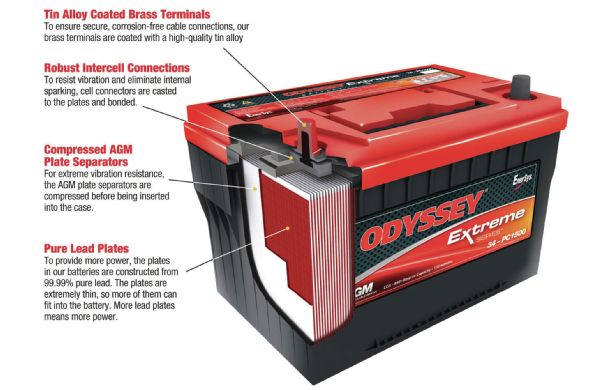 Odyssey use 99.9 percent pure lead in its batteries. While this costs more than recycled lead or lead alloy, it allows for increased amperage in the same size package compared to a traditional lead acid battery.
Odyssey use 99.9 percent pure lead in its batteries. While this costs more than recycled lead or lead alloy, it allows for increased amperage in the same size package compared to a traditional lead acid battery.
Even in the same size package as the factory battery, AGM construction provides increased cranking amps compared to a traditional flooded battery. The easiest upgrade you can make to your vehicle is to replace the stock battery with an AGM battery of the same size (Group 34 is a common size in many 4x4s). AGM batteries also do a better job of being full discharged, such as during heavy winching, and being recharged without damage.
You may require even more power for your ear-pounding stereo or to turn over your high-compression engine. Or, conversely, perhaps you have a lightweight buggy that only has room for a small battery under the hood. Odyssey offers batteries in a variety of shapes and sizes to fit any application. Obviously the larger the battery the more power, but space and budget constraints are also factors in determining which battery is right for you. Another factor is securely mounting the battery in place. Batteries are heavy, and expensive, so you never want to rely on a bungee cord or ratchet strap to secure them. There’s a wide selection of battery boxes on the market from companies such as Artec Industries and Trail-Gear that are made for specific battery models and that can be bolted in place of the factory battery tray or anywhere space allows. So fire up that LED light bar and winch with confidence and without concerns about your battery stranding you on the trail.
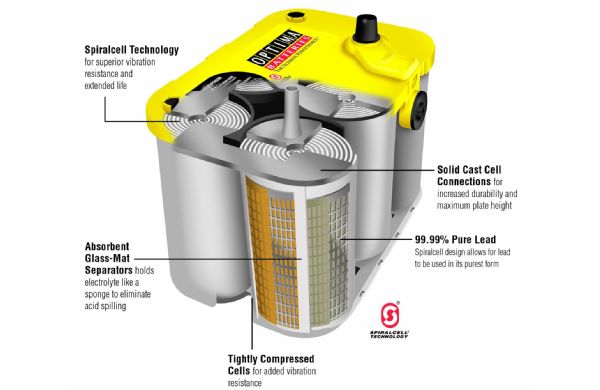 Unlike in other batteries, the lead in each cell of an Optima battery is rolled in a proprietary Spiracell technology. This packaging method is vibration resistant and means that even if one cell is damaged for some reason, the others can still power the vehicle.
Unlike in other batteries, the lead in each cell of an Optima battery is rolled in a proprietary Spiracell technology. This packaging method is vibration resistant and means that even if one cell is damaged for some reason, the others can still power the vehicle.
Know the Lingo
Cold cranking amps (CCA) are the most common barometer we use when comparing batteries, but a variety of other terms are useful when comparing specifications between various battery brands and sizes.
Battery Council International (BCI) Group Size: The BCI Group Size refers to a battery's maximum physical dimensions. Groups 31, 34, and 78 are the most common sizes in most 4x4s if you are looking for a drop-in replacement.
Cranking amps (CA): The number of amps a battery at 32 degrees F can deliver for 30 seconds while maintaining a minimum voltage of 7.2 volts.
Cold cranking amps (CCA): The number of amps a battery at 0 degrees F can deliver for 30 seconds while maintaining a minimum voltage of 7.2 volts.
Depth of discharge (DOD): The percentage of the battery's total power that is discharged. A deep discharge refers to a DOD under 50 percent of the battery's potential, and is useful for 4x4s that are subjected to hard winching or if you like to run your stereo all night in camp.
Hot cranking amps (HCA): The number of amps a battery at 80 degrees F can deliver for 30 seconds while maintaining a minimum voltage of 7.2 volts, or 1.2 volts per cell.
Reserve capacity (RC) or reserve capacity minutes (RCM): The minutes a battery at 80 degrees F can deliver a continuous 25-amp current while maintaining 10.5 volts.
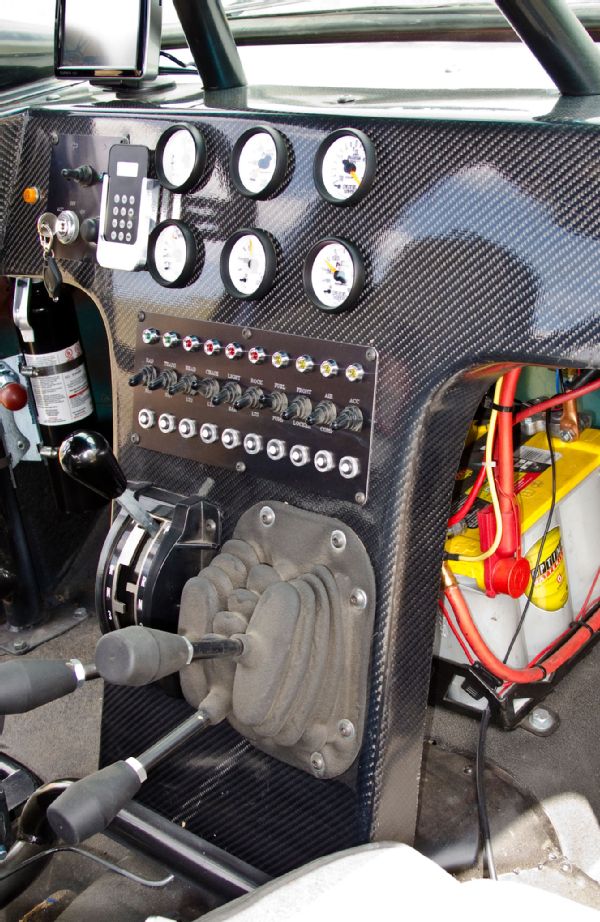 Since they do not give off gas and cannot spill, AGM batteries can be mounted inside the cargo compartment of your 4x4 to free up space under the hood. Remember to make the battery easy to reach in the event you need to jumpstart it.
Since they do not give off gas and cannot spill, AGM batteries can be mounted inside the cargo compartment of your 4x4 to free up space under the hood. Remember to make the battery easy to reach in the event you need to jumpstart it.
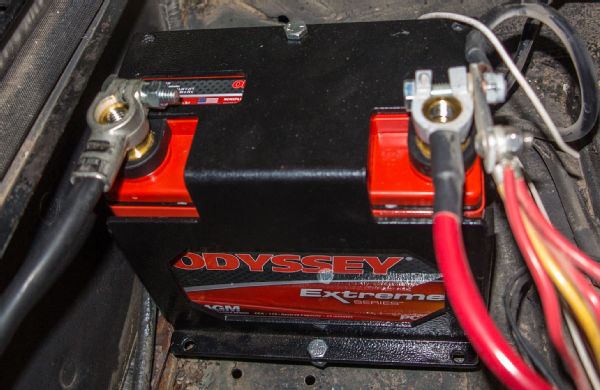 Artec Industries makes battery boxes that fit a variety of Odyssey, Optima, and Die Hard batteries. This bracket allowed us to mount a compact Odyssey PC680 behind the driver seat, where it is easy to access.
Artec Industries makes battery boxes that fit a variety of Odyssey, Optima, and Die Hard batteries. This bracket allowed us to mount a compact Odyssey PC680 behind the driver seat, where it is easy to access.
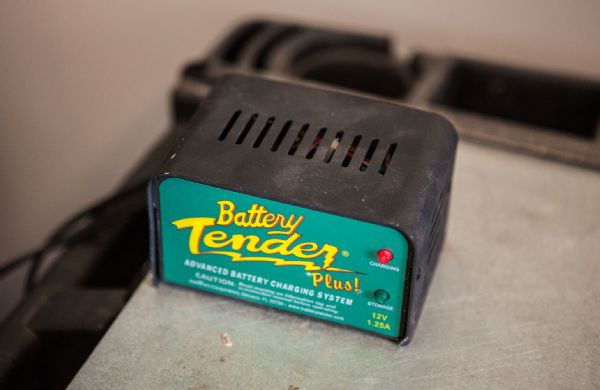 Vehicles parked for extended periods are prone to discharge, particularly late-model vehicles with many electrical accessories. If your 4x4 sits for a long time, consider adding a Battery Tender to keep the battery full charged for the next time you want to hit the trail.
Vehicles parked for extended periods are prone to discharge, particularly late-model vehicles with many electrical accessories. If your 4x4 sits for a long time, consider adding a Battery Tender to keep the battery full charged for the next time you want to hit the trail.
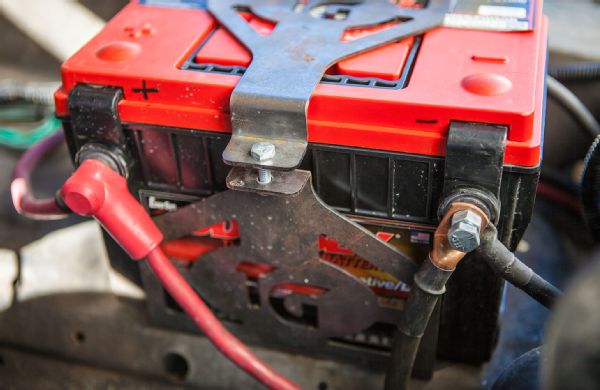 Some batteries use post terminals, while others use accept ring terminals. The terminals can be located on the side of the battery or the top of the battery. Odyssey offers post terminals that can be added to any of the company’s batteries to retain compatibility with your factory cables. Here we used standard hardware to ease the addition of jumper cables and covered the positive post to ensure that we do not arc across the battery.
Some batteries use post terminals, while others use accept ring terminals. The terminals can be located on the side of the battery or the top of the battery. Odyssey offers post terminals that can be added to any of the company’s batteries to retain compatibility with your factory cables. Here we used standard hardware to ease the addition of jumper cables and covered the positive post to ensure that we do not arc across the battery.